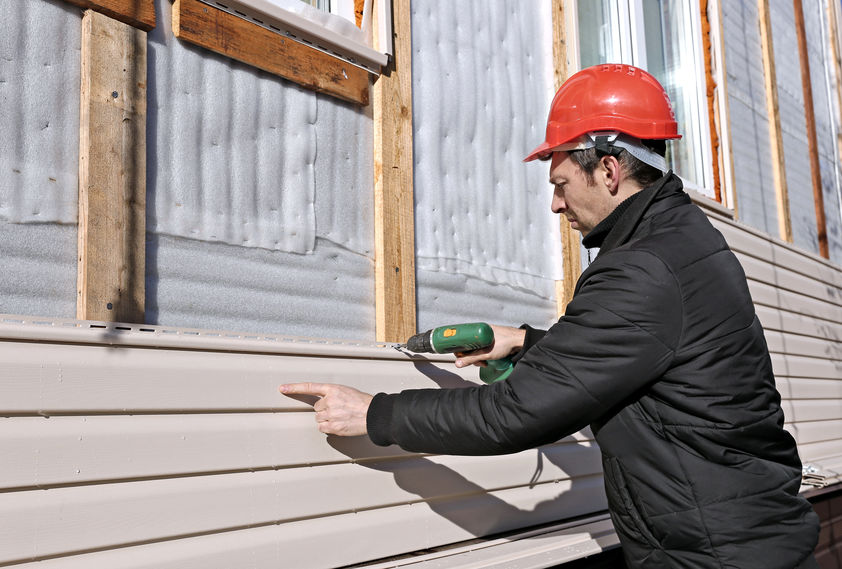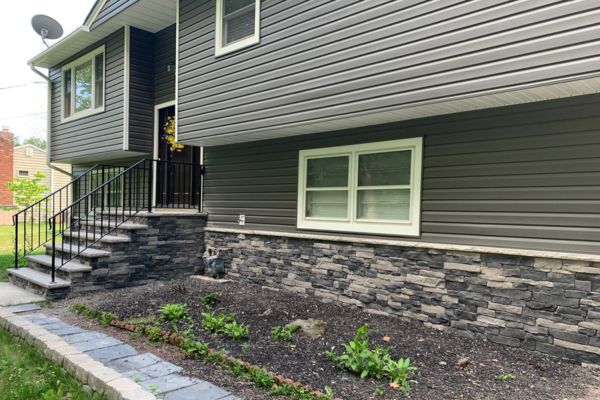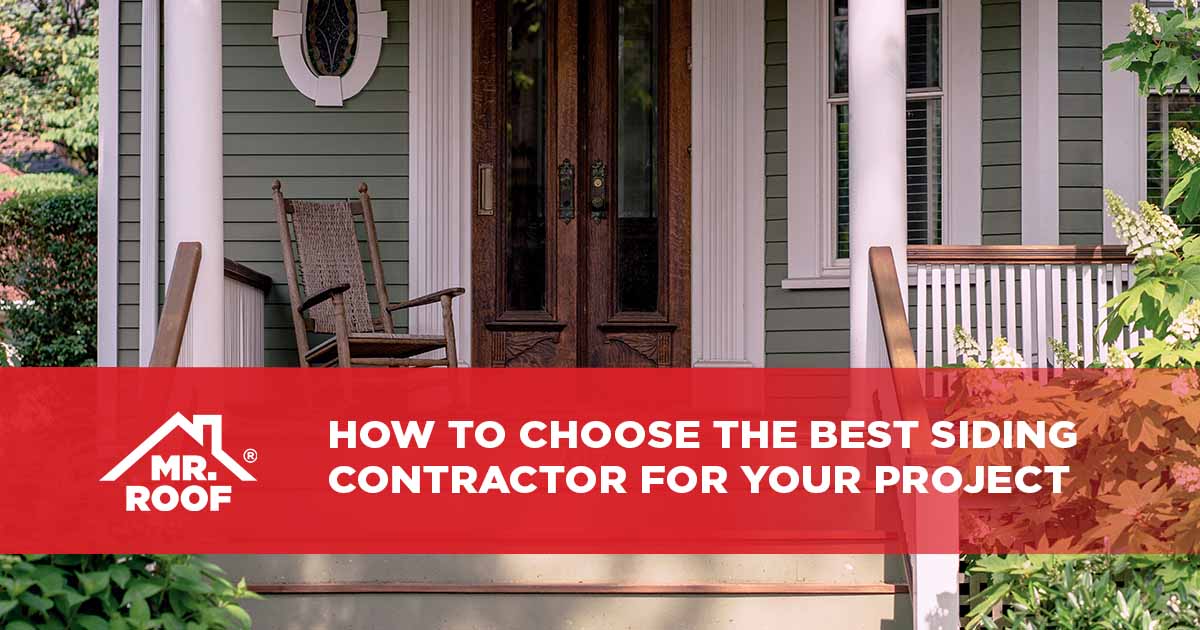Skilled Morris Siding Contractor Providing Customized Exterior Solutions
Skilled Morris Siding Contractor Providing Customized Exterior Solutions
Blog Article
The Important Guide to the Different Kinds of House Siding and Their Special Advantages
In the realm of home improvement, selecting the appropriate home siding is a critical decision that impacts both aesthetic allure and practical performance. With so many choices to consider, which house siding product truly stands out for your specific job?
Wood Exterior Siding
Wood house siding, a prominent choice for residential outsides, offers a timeless aesthetic that incorporates natural beauty with architectural stability. This siding material is available in various designs, including clapboard, shingles, and board-and-batten, allowing house owners to personalize their façade to match their layout choices. Timber house siding is typically crafted from sturdy varieties such as cedar, redwood, or pine, which are known for their durability and ability to endure ecological stress factors.
One of the primary benefits of timber home siding is its excellent insulation residential or commercial properties, which can add to energy efficiency and lower heating prices. Additionally, wood exterior siding is eco-friendly, making it an eco-friendly alternative when sourced sustainably. Regular upkeep, including painting or staining, can lengthen its life expectancy and enhance its appearance, permitting homeowners to preserve the natural appeal of the wood.
Nonetheless, potential disadvantages include sensitivity to pests, rot, and weather condition damages, requiring ample therapy and upkeep - morris siding contractor. Regardless of these worries, when effectively looked after, timber exterior siding can provide a durable and lovely service that boosts the personality of a home while using a warm, welcoming ambience

Plastic House Siding
Plastic siding has actually become a leading option for property owners seeking a low-maintenance exterior option that incorporates resilience and affordability. This flexible material is crafted from polyvinyl chloride (PVC), making it immune to different climate condition, consisting of moisture and UV rays. Because of this, plastic house siding does not warp, rot, or discolor, making certain lasting aesthetic allure.
One of the primary benefits of plastic home siding is its extensive series of shades and designs, permitting property owners to accomplish the desired look for their home without the requirement for regular repainting. Furthermore, vinyl home siding is very easy to set up, which can dramatically lower labor costs throughout construction or restoration projects.
Vinyl siding likewise adds to energy efficiency. Many alternatives attribute insulation support, which boosts thermal efficiency, aiding to preserve comfortable indoor temperatures and potentially lowering energy bills. Its smooth surface promotes very easy cleansing, requiring just periodic cleaning with a garden pipe to remove dust and debris.
Fiber Concrete House Siding
Fiber cement exterior siding has actually acquired grip amongst homeowners and home builders alike because of its remarkable mix of longevity and visual convenience. Made up of a mixture of cellulose, sand, and cement fibers, this exterior siding alternative is crafted to endure severe weather, consisting of these details high winds, heavy rain, and temperature fluctuations, making it a durable selection for residential outsides.

One of the main advantages of fiber concrete home siding is its resistance to insects, such as termites, and its non-combustible nature, offering improved fire safety and security. morris siding contractor. Additionally, it is readily available in a large selection of styles, structures, and shades, allowing property owners to accomplish their desired visual without compromising performance
One more advantage is its low maintenance requirements; fiber concrete exterior siding typically requires painting or discoloration every 5-10 years, which is less frequent than various other materials. In addition, its long life adds to a reduced overall expense of possession, as it reduces the requirement for constant repairs or substitutes.
Inevitably, fiber cement home siding stands for an excellent financial investment for those seeking a resistant, appealing, and functional exterior alternative, combining both form and function to enhance the home's visual charm.
Metal Siding
The allure of metal siding hinges on its durable longevity and contemporary aesthetic charm, making it a preferred choice for modern style. Available in products such as aluminum and steel, steel house siding uses a variety of shades and finishes, permitting house owners to attain a customized appearance that matches their style vision.

Energy effectiveness is one more substantial benefit, as numerous steel exterior siding items are designed with insulation alternatives that assist control indoor temperature levels. This can cause minimized energy prices gradually. In addition, steel home siding is commonly recyclable, making it an eco-friendly choice for sustainability-minded property owners.
The installation procedure for steel home siding can be fairly straightforward, causing a quicker turn-around time for building tasks. On why not check here the whole, metal house siding integrates capability and style, making it a functional choice for those looking for a visually appealing and long-lasting outside finish.
Brick and Rock Siding
Brick and stone siding sticks out as a timeless selection that boosts the aesthetic beauty of any home. Known for their resilience and low upkeep, these materials provide a remarkable roi while elevating the building's curb charm. Offered in various shades, textures, and patterns, brick and stone can be tailored to fit diverse building designs, from traditional to modern.
One of the main benefits of brick and rock house siding is their energy performance. Both materials possess natural protecting buildings that aid control interior temperature levels, potentially minimizing cooling and heating costs. Furthermore, they offer superior fire resistance contrasted to various other exterior siding choices, adding to enhanced security.
One more benefit is their longevity. Block and rock can last for decades, frequently calling for minimal maintenance past occasional cleaning. Unlike timber house siding, they are unsusceptible parasites and rot, making certain a long-lasting outside that stands up to the aspects.
Conclusion
In summary, the option of house siding considerably influences a home's visual allure, energy effectiveness, and upkeep demands. Each type of home siding-- whether timber, vinyl, fiber concrete, metal, or brick and rock-- uses unique benefits tailored to various property owner choices and ecological conditions.
One of the key benefits of timber exterior siding is its excellent insulation properties, which can contribute to energy efficiency and lower heating costs. Furthermore, wood siding is biodegradable, making it an ecologically friendly choice when sourced sustainably.One of the main benefits of metal exterior siding is its resistance to numerous ecological factors.Power efficiency is an additional significant advantage, as several metal home siding products are created with insulation options that help regulate indoor temperature levels. Each type of exterior siding-- whether timber, plastic, fiber concrete, block, or steel and rock-- supplies one-of-a-kind advantages tailored to numerous house owner preferences and environmental conditions.
Report this page